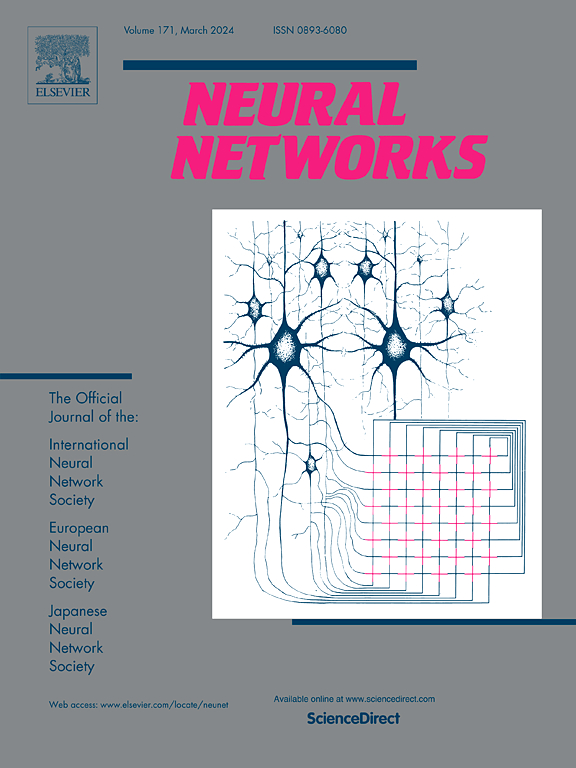An end-to-end bi-objective approach to deep graph partitioning
IF 6
1区 计算机科学
Q1 COMPUTER SCIENCE, ARTIFICIAL INTELLIGENCE
引用次数: 0
Abstract
Graphs are ubiquitous in real-world applications, such as computation graphs and social networks. Partitioning large graphs into smaller, balanced partitions is often essential, with the bi-objective graph partitioning problem aiming to minimize both the “cut” across partitions and the imbalance in partition sizes. However, existing heuristic methods face scalability challenges or overlook partition balance, leading to suboptimal results. Recent deep learning approaches, while promising, typically focus only on node-level features and lack a truly end-to-end framework, resulting in limited performance. In this paper, we introduce a novel method based on graph neural networks (GNNs) that leverages multilevel graph features and addresses the problem end-to-end through a bi-objective formulation. Our approach explores node-, local-, and global-level features, and introduces a well-bounded bi-objective function that minimizes the cut while ensuring partition-wise balance across all partitions. Additionally, we propose a GNN-based deep model incorporating a operator, allowing the model to optimize partitions in a fully end-to-end manner. Experimental results on 12 datasets across various applications and scales demonstrate that our method significantly improves both partitioning quality and scalability compared to existing bi-objective and deep graph partitioning baselines.
深度图分割的端到端双目标方法
图在现实世界的应用中无处不在,例如计算图和社交网络。将大型图划分为更小、更均衡的分区往往是至关重要的,双目标图划分问题的目标是最大限度地减少分区之间的 "切割 "和分区大小的不均衡。然而,现有的启发式方法面临着可扩展性的挑战,或者忽略了分区平衡,导致结果不理想。最近的深度学习方法虽然前景广阔,但通常只关注节点级特征,缺乏真正的端到端框架,导致性能有限。在本文中,我们介绍了一种基于图神经网络(GNN)的新方法,该方法利用多级图特征,通过双目标表述来解决端到端问题。我们的方法探索了节点、局部和全局级别的特征,并引入了一个边界良好的双目标函数,该函数在确保所有分区平衡的同时最小化切分。此外,我们还提出了一种基于 GNN 的深度模型,其中包含一个 Hardmax 算子,允许该模型以完全端到端的方式优化分区。在 12 个不同应用和规模的数据集上的实验结果表明,与现有的双目标和深度图分割基线相比,我们的方法显著提高了分割质量和可扩展性。
本文章由计算机程序翻译,如有差异,请以英文原文为准。
求助全文
约1分钟内获得全文
求助全文
来源期刊

Neural Networks
工程技术-计算机:人工智能
CiteScore
13.90
自引率
7.70%
发文量
425
审稿时长
67 days
期刊介绍:
Neural Networks is a platform that aims to foster an international community of scholars and practitioners interested in neural networks, deep learning, and other approaches to artificial intelligence and machine learning. Our journal invites submissions covering various aspects of neural networks research, from computational neuroscience and cognitive modeling to mathematical analyses and engineering applications. By providing a forum for interdisciplinary discussions between biology and technology, we aim to encourage the development of biologically-inspired artificial intelligence.
 求助内容:
求助内容: 应助结果提醒方式:
应助结果提醒方式:


